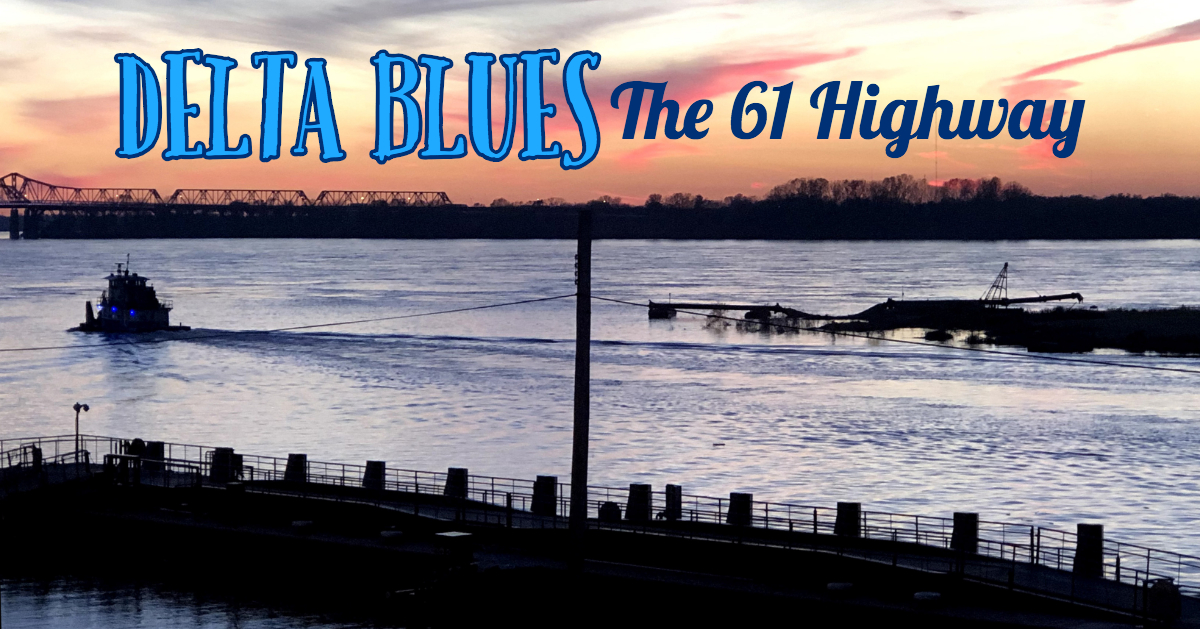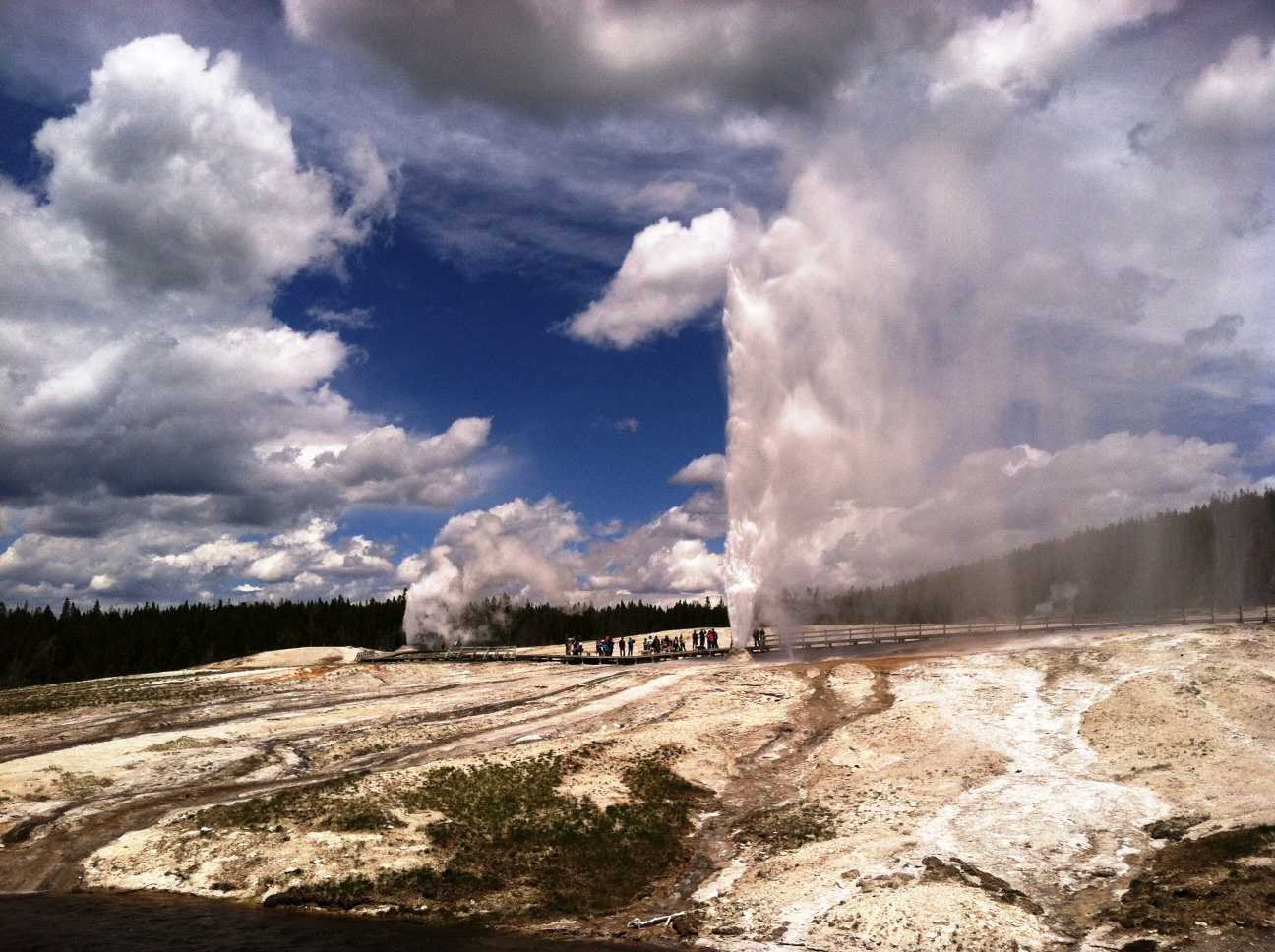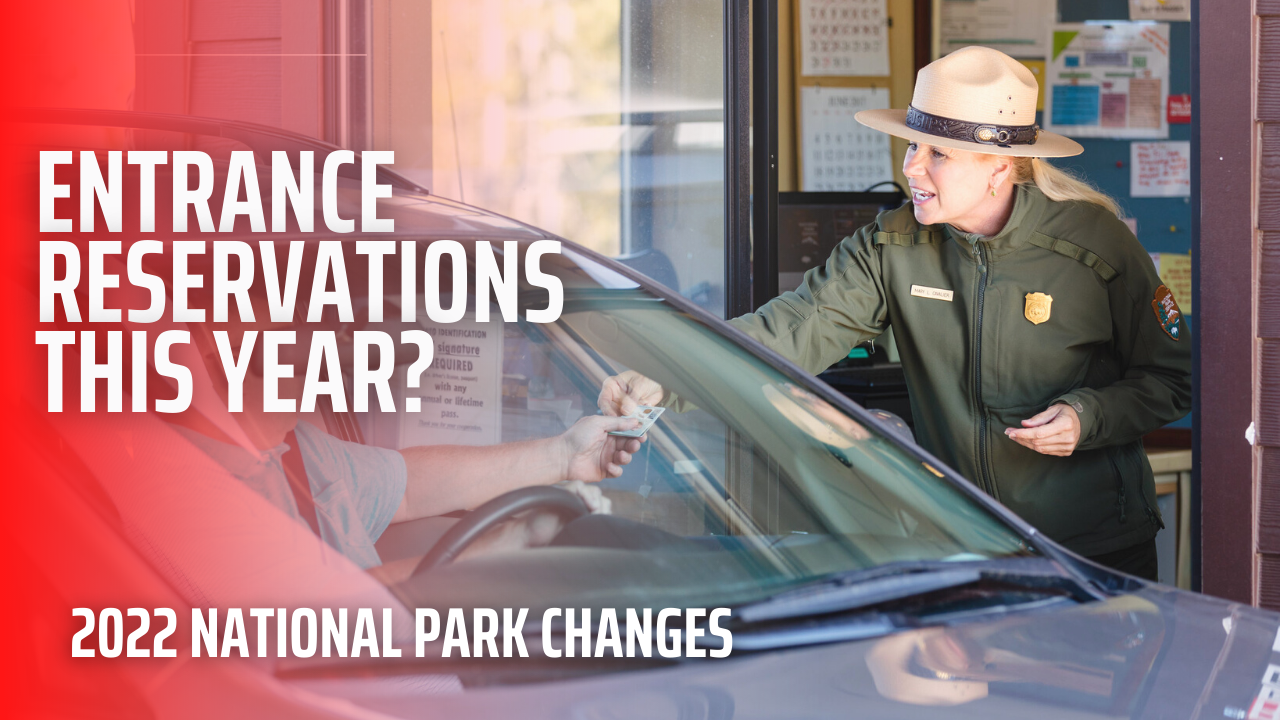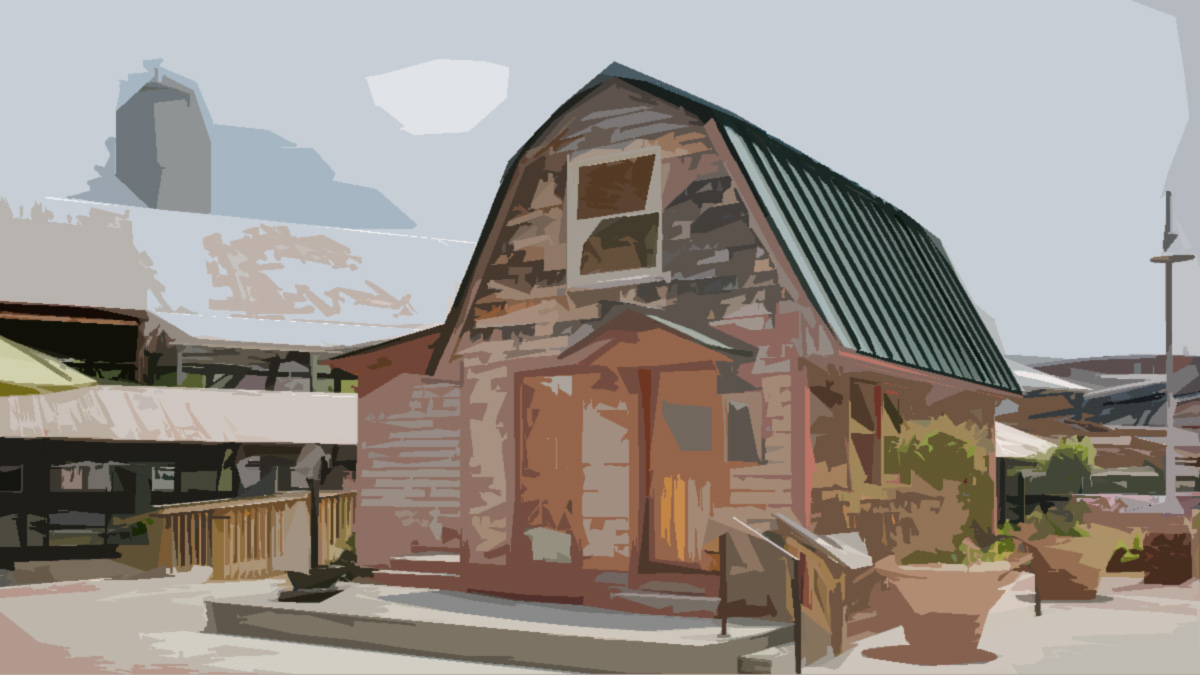By Mark Walker
Highway 61, known as the “blues highway,” is rich with the history of musicians in the Mississippi Delta area. It’s the birthplace of the blues, where, in the 30s and 40s, artists would play “juke joints” — informal establishments known for music, dancing, gambling, and drinking. The joints are long gone, but the blues is still alive along this scenic highway.
Our travels around the U.S. had missed the deep south thus far, and we decided that a Highway 61 would be the perfect entry point. Our blues journey started in New Orleans where we visited a number of jazz/blues bars on Frenchman street. Although Bourbon street is fun and has a number of good bars with live music (check out the Funky Pirate for some good blues), I prefer Frenchman street. We spent a few hours at the 30/90 bar listening to a wonderful trio (great happy hour with 50-cent oysters and wings and cheap
A trip to The French Quarter is not complete until you stand in line for an hour to see the Preservation Hall Jazz Band. The room is old (I mean really, really old!). The walls are covered with pegboard, old peeling wallpaper and pictures from the
New Orleans is the beginning of Route 61 and from there we headed north to Vicksburg, Mississippi.
To better understand some of the roots of the blues, we need to go all the way back to the Civil War. The year was 1863 and Vicksburg, MS was under siege from the Union Army. General John Pemberton (Confederate) surrendered Vicksburg to General Grant (Union) after sustaining huge loses and facing a catastrophic defeat by an army that greatly outnumbered his abled soldiers. Of course, none of us were there, but we have all read about the journey of both sides as it has been written and rewritten over the last 150+ years. The graphic details have been captured in writing (prose and verse), paintings and photographs … but mostly in writing.
Imagine explaining to the slaves, working on the cotton plantations in Mississippi, that the war was over and slavery was abolished. Their stories and many stories from the south were captured in verse with ‘call-and-response’ pattern. Call-response is widely used in gospel, blues and spirituals where one singer says a line and the group responds with the same line. A good example of this pattern can be heard in Cab Calloway’s, “Minnie the Moocher” (Hi De Hi De Hi De Ho).
These songs are so very important to our culture and honestly capture the voice of the people; rather than interpreted by historians, newspapers or movies. These spirituals were often sung in the fields describing the hardships of slavery, but they also had encoded messages about escaping slavery. This spiritual by Harriet Tubman was telling the slaves to dress in blue if they were planning an escape off of the plantation:
Chorus: Wade in the Water, wade in the water children.
Wade in the Water. God’s gonna trouble the water.
Who are those children all dressed in Red?
God’s gonna trouble the water.
Must be the ones that Moses led.
God’s gonna trouble the water.
Chorus: Wade in the Water, wade in the water children
Who are those children all dressed in White?
God’s gonna trouble the water.
Must be the ones of the Israelites.
God’s gonna trouble the water.
Chorus: Wade in the Water, wade in the water children
Who are those children all dressed in Blue?
God’s gonna trouble the water.
Must be the ones that made it through.
God’s gonna trouble the water.
Harriet
The 61 Highway (as we know it today) did not exist during the Civil war, but it was an important north-south connection for commerce and trade. The route went from New Orleans to Minnesota, but most of the history of the blues is in Mississippi.
While in Vicksburg, we had a drink and (a variation of) poutine at the Cottonwood Public House. They do have live music there, unfortunately, the stage was empty that night. But there are plenty of historic places to see in Vicksburg:
1) Jesse Brent Lower Mississippi River Museum: Excellent history which explores the river’s relationship with local society.
2) Old Depot: Next to the Jesse Brent museum and worth a look if you are interested in seeing a diorama of the siege of Vicksburg, lots of train tracks and model ships that were used in the Civil War.
3) Biedenharn Coca-Cola Museum: The first company to put Coca-Cola syrup and carbonated water into a bottle. All of the production equipment is in the store, along with lots of memorabilia.
4) Vicksburg National Military Park: This is a must see! After seeing the diorama at the Old Depot museum, you can drive through and see the entire site of the Battle of Vicksburg which lasted 47 days. There are hundreds of memorials to see while you tour the site in your car. The park was opened in 1899 and many of the soldiers were consulted to get an accurate perspective of the battle.
5) USS Cairo museum (part of the National Military Park): The Cairo (pronounced KY-row) was one of the first ironclad warships built at the beginning of the Civil War. Imagine a paddle wheel boat that is encased by 3 inches of railroad iron. It was sunk by a mine that was remotely detonated by hand. In the 60s and 70s there was a tremendous effort to raise this ship from the bottom of the Mississippi river and transport the vessel to the museum where it sits today.

6) The Tomato Place: A very funky restaurant with the best grilled cheese sandwich you’ll ever have. They also sell homemade bread, pickles, BBQ sauce, jams and jellies and so much more.
From Vicksburg we traveled to Indianola to see the B.B. King Museum. The cotton-tipped summer plants strewn along the highway almost the entire way. We arrived late into this small town and stayed at Willie’s Last Resort RV Park. I think there were about 10-12 spots and it is a bit of a challenge to find. There was no one staying there and no one was attending the lot – but that didn’t sway us from staying, as there were really no other options. They have full hookups, but we just wanted shore power because it was getting very cold with a possibility of snow. We bought a small electric heater to help keep our little home cozy and warm and it worked great (saving a lot of propane and much more quiet than hearing the heater going on and off all night). I think it was $25/night, but no one ever came to collect the fee, so we just drove a block to the B.B. King Museum.

We spent about two hours in the museum and were the only ones there. Not only was B.B. a blues phenomenon he was also a very generous human being. Riley B. King was born in the Delta Valley in 1926 and lived on a plantation where their family were sharecroppers in Indianola. He got his name while playing on Beale Street in Memphis – Blues Boy… B.B. He has a unique music technique known as string bending (listen to B.B.’s version of “The Sky Is Crying,” then listen to a few other artists, you will know what I mean) and differentiated his style so much, that he became known as the King of Blues. He had a large following in the 50s and was not afraid to give them a show. In 1956, he gave 342 concerts in one year – he took ten days off! That’s impressive.
The museum brings you through his entire life and you can’t help but shed a few tears as you follow his journey. B.B.’s mother died when he was quite young and B.B. was raised by his grandmother. He was quoted as saying “I would give any amount of money to have just one picture of my mother.” He is also buried next to the museum with a beautiful memorial. A must see along the 61 Highway.
Our next stop was Clarksdale, MS – what some say was the birthplace of the blues. There are no more Juke Joints left on the highway (none that we could see), but there is a very cool joint in Clarksdale called Ground Zero Blues Club (co-owned by Morgan Freeman). We saw the Taylor Made Blues Band that night and enjoyed some of the local favorites including fried green tomatoes, Mississippi tamales and some catfish. It wasn’t very busy and we spent the night eating and drinking and listening to some great blues. We had so much fun that we spent the night in the parking lot of the GZBC. Our waitress said it was fine and the RV park near the Clarksdale high school was really a mobile home park. We awoke in late morning and walked to Grandma’s Pancake House a few blocks away. It was a good breakfast and the pancakes were perfect. The whole meal only cost us $17.
We returned and went to the Delta Blues Museum for a quick look (it is a good museum, but they seem to lack funding). Worth a look, as they do have the original cabin where Muddy Waters was born right there in the museum, as well as a number of local Clarksdale musicians.
Before you leave, get a quick view of the highway 61/49 intersection sign, known as the crossroads, where Robert Johnson was rumored to have sold his soul to the devil to be the King of Delta Blues. Robert Johnson was born in 1911 and died just 27 years later. Listen to his album King of the Delta Blues Singers recorded in 1936 which definitely gives you an impression of the Delta Blues style. I looked for the devil while I was at the crossroads, but he was nowhere to be found.

We headed north to Memphis, our final stop of the 61 Highway tour. We stayed at the Graceland RV Park; which is next-door to the new museum complex and Graceland. Elvis was born in Tupelo, MS in 1935 and was introduced to blues and gospel when he snuck across the train tracks to listen to the church choirs on Sunday. Elvis’ style was a blend of Rock, Country, Gospel and the blues. This thing called the blues eventually had a baby called Rock-n-Roll.
As we drive toward Beale Street, I can feel the excitement edging up from my stomach. This is where Sun Records recorded so many great artists such as Elvis, Johnny Cash, Roy Orbison, Merle Haggard, Charlie Rich, Jerry Lee Lewis, Carl Perkins and so many more. Not sure which came first… the artist… or the recording studio. Either way, there is a lot of talent in Memphis. We stopped by the Rum Boogie to see a local artist from Nashville – John D’Amato. He and his wife make a great team with Hot tub on the bass. Great music and a very tight group. Your $5 cover gets you into the Rum Boogie Blues Hall right next door and we heard a funky band, the Porter Road Jug Band, with a tuba, guitar banjo and kazoo (with a suitcase as a drum). They played a great version of Cornbread and Butterbeans. So cool.

And with that we end our trip along the 61 Highway. I learned that the blues is not just about the downtrodden, but also has a message of hope with better things to come. As we all look back in our lives, we remember so many things that we learned from our family — the experiences of our childhood may haunt us or help us find our voice. Whichever it might be, the road to benevolence will teach us compassion and tolerance; and hopefully allow us to appreciate the kindness of strangers when they reach out and offer a helping hand. When the opportunity presents itself, share a little kindness with others. They may have the blues and you may be the message of hope. Be well out there.








